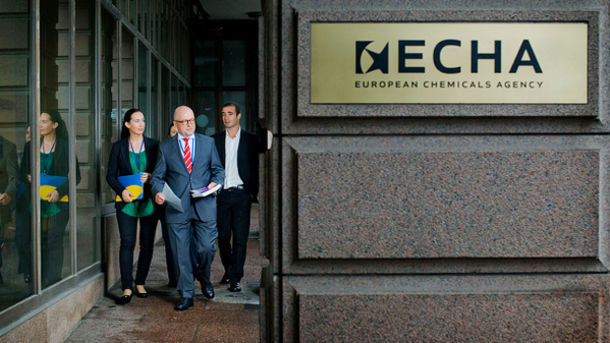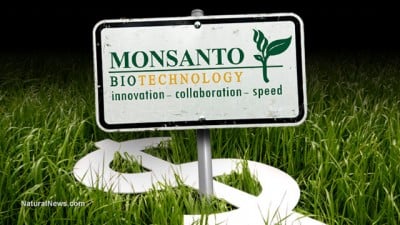
Toxic Relations: Stop Colluding with Monsanto and the Agrochemical Industry!
She also sent Chadwick a 19-page document (MonsantohascommittedslowpoisoningofthepeopleofWales) in which she asserts that Monsanto has engaged in the slow poisoning of the people of Wales with PCBs and Roundup. This, she says, is with the help of the British government, the Expert Committee on Pesticides, the Health and Safety Executive, Defra, the Royal Society, European Food Safety Authority, European Chemicals Agency, the German Rapporteur Member State, the BBC, the BMA and Rupert Murdoch.
Mason also discusses how Monsanto has committed ecocide with Roundup in Wales thanks to Swansea City Council’s authorised spraying of it on city roadsides. A total of 518 kg was used in 2016.
She mentions her long and unsatisfactory many years’ history of correspondence with the HSE about pesticides, which has failed to stimulate appropriate regulatory action despite the firm evidence she has provided about the damaging effects of biocides throughout the UK and across the globe.
As with many of her previous documents, Mason outlines how Monsanto has conspired to keep its money-spinning, disease-causing product (glyphosate-based) Roundup on the market via a combination of deception, the manipulation of science and regulatory processes and the co-option of key figures – the same company that was also involved in the cover up of Polychlorinated biphenyls (PCBs).
Monsanto in Wales: PCBs and toxic dumping
Mason states:
“Wales is the site of the worst environmental disaster that the public has never heard of because there was a massive cover up for more than 40 years.”

Source: Hwaairfan’s Blog
She describes the role of the British government in colluding with Monsanto by outlining how Monsanto poisoned the environment in Wales with the dumping of toxins from its factory there, where it manufactured PCBs and other dangerous chemicals. The company knew about the health risks of PCBs long before they were banned. Company papers subsequently released show that for more than 30 years Monsanto had sat on lab tests results that indicated PCBs were fatal to rats and other animals.
It stopped making PCBs in Anniston (US) in 1971 because of scandals about PCBs on the health of the population and wildlife. However, the British government agreed to ramp up production at the Monsanto plant in Newport, Wales.
Toxic waste from the increased production was dumped at various quarries in Wales and one in the north of England. The British government, which knew of the dangers of PCBs in the environment in the 1960s, allowed their production in Wales until 1977.
Mason notes the extraordinary lengths to which the British government went to protect Monsanto and cover up the truth. One quarry has been found to contain at least 67 toxic chemicals. Seven PCBs have been identified, along with vinyl chlorides and naphthalene. A few years ago, the unlined quarry was found to be still leaking (the pollution of water has been occurring since the 1970s). The waste and groundwater contain significant quantities of poisonous, noxious and polluting material.
PCBs are chemicals that persist in the environment and will never disappear from Wales.
Mason argues:
“The continual leak of Monsanto’s toxic chemicals will carry on for many years from Brofiscin, Maendy or one of the other five quarries around Wales in which toxic chemical waste was carried in the past by lorries bearing IWD/Purle and Monsanto logos.”
Mason describes how important research has been ignored by regulators and governments over the years that showed how various agrochemicals and other man-made chemicals in the environment are changing humans: polychlorinated biphenyls (PCBs), DDT, chlordane, lindane, aldrin, dieldrin, endrin, toxaphene, heptachlor, dioxin, atrazine and dacthal – all identified as endocrine disruptor chemicals.
As a resident of Wales, Mason notes that in 1973, she swapped being poisoned by PCBs leaking into the Cardiff water supply for Monsanto’s test bed for its flagship glyphosate-based herbicide Roundup in Swansea. In her various papers, Mason has provided disturbing descriptions of how glyphosate has been used liberally in South Wales, and data relating to the deteriorating health of residents as well as degradation of the environment and biodiversity across the UK.
Yet, due to government collusion with the agrochemical sector, European directives have been sidelined, regulatory processes subverted and ‘business as usual’ remains the order of the day.
Business as usual
The British Government enjoys very close financial relationships with Monsanto, Syngenta, AstraZeneca, Bayer CropScience and Dow Chemicals. Mason states:
“The UK government supported the Glyphosate Task Force (GTF), a consortium of companies joining resources and efforts in order to renew the European glyphosate registration with a joint submission (most companies produce their own formulated glyphosate products).”
She then highlights how private corporations are shaping the government’s research agenda in Britain in a way that serves their own interests:
“In 2010 Michael Pragnell, founder of Syngenta and former Chairman of CropLife International, was appointed as Chairman of Cancer Research UK (CRUK) and by 2011 CRUK was donating money (£450 million/year) to the Government’s Strategy for UK Life Sciences and AstraZeneca (Syngenta’s parent company) was providing 22 compounds to academic research to develop medicines in the UK. One Corporation promotes cancer; the other Corporation tries to cure it.”
Whether it is CRUK, the Francis Crick Institute or the Oxford Martin Commission (see Mason’s letter to the OMC here) for Future Generations, Mason draws attention to the fact that these bodies, which say they are concerned about health and disease, appear to do their best to avoid addressing the issue of transnational agrochemical companies and their products.
She asks:
“When did Oxford University lose its way? Was it when the Global Corporations came in with money to offer for services? Sir Richard Doll the epidemiologist who, together with Austin Bradford Hill, worked out that smoking caused cancer became Regius Professor of Medicine at Oxford University in 1969 and a Companion of Honour in 1996 for ‘services of national importance’. Only after his death it was discovered between 1976 and 2002 that he had been paid by Monsanto to defend Agent Orange and PCBs in Court.”

Source: sustainablepulse.com
And it gets worse. The EU Commission (EC) has announced that it is planning to extend authorisation for glyphosate for a further ten years. The decision is based on the latest evaluation published by the European Chemicals Agency (ECHA) declaring glyphosate to be safe. The EC has actually approved 14 new import authorisations for genetically engineered plants resistant to herbicides. All these plants will contain residues from spraying. Several of the genetically engineered plants recently approved for import are not only resistant to glyphosate but also to combined applications of other dangerous herbicides, such as 2,4-D, dicamba, glufosinate and isoxaflutole.
Mason has already written to the ECHA concerning its flawed evaluation of glyphosate.
Key figures are dismissive of Mason’s work
If you read Rosemary Mason’s series of documents, you will be impressed with the amount of information she has placed in the public domain. What might be more impressive is that her evidence is always supported with reference to many official reports and (peer-reviewed) scientific studies. Her work is not just about the science behind chemicals and their impacts on people and nature. She brings to the table analyses that also delve deep into the politics of policy- and decision-making.
For all the effort put in, the recipients of her open letters seem to dismiss or ignore what she has to say. These are high-level figures often working in publicly funded institutions and whose agencies – at least in theory – are seeking to balance the interests of the public with commercial interests to the benefit of everyone involved.
However, the response to her letters seems to be ‘thanks but no thanks, we have all this covered’, even though Mason has produced page after page of evidence to show they have not got it covered and are colluding with the agrochemical sector to privilege its interests ahead of all else.
While Mason writes about the poisoning of people, water, soil and food, what her writing is ultimately about is corruption in high places and a neoliberal capitalism that regards regulation as a barrier to lining the pockets of highly paid CEOs and shareholders.
What it amounts to is a crime against humanity because the whole of humanity is paying the price. From Wales and the US to Argentina and India, the impacts of transnational agribusiness and the rolling out of its toxins are clear to see.
The media largely remains silent on the issue of agrochemicals and disease, preferring to parrot a narrative about individual choice and lifestyle being responsible for various illnesses (see this). This conveniently diverts attention from the role of the agrochemical sector and how public institutions and governments are colluding with the industry to frame legislation and polices to ensure business as usual.
Green Revolution: money-spinning chemical revolution
The Green Revolution was a chemical revolution based on proprietary seeds and chemical inputs, monocropping and ultimately debt. It was exported across the world and pressed into the service of US geostrategic interests and corporate profit. The model is not only unsustainable but is and has been underpinned by a resource-grabbing, food-deficit producing US foreign policy agenda for many decades, assisted by the WTO, World Bank and IMF (for instance, see ‘this and ‘this).

Source: scidev.net
Mason has discussed in her many documents the loss of biodiversity and the devastating impact on health as a result of this model of farming. In her new document, she refers to Iowa in the US with is chemical-drenched fields and monocultured of GM Roundup Ready corn: no birds, no bees, no insects in a world where corn is king. Anything that might eat corn, hurt corn, bother corn is destroyed.
Some 100 years ago, the same fields were home to 300 species of plants, 60 mammals, 300 birds, hundreds and hundreds of insects. That all gave way to industrialised ‘efficiency’ courtesy of a Monsanto model of agriculture propped up by billions of dollars of taxpayer handouts. A water-intensive model of agriculture that turns soil into degraded chemical cocktails and humans into carriers of disease.
Monsanto’s whole business model is based on conquest. It captures markets and key institutions, destroys competition and relies on the US government to maintain its profits and access to regions of the world. It relies on the US state to keep the fundamentally crisis-ridden neoliberal agenda on track by facilitating corporate imperialism.
There are genuine alternatives (see this as well) to the prevailing chemical-intensive model of agriculture and the massive social, environmental and health costs it entails. To be genuinely effective, however, these alternatives must go hand-in-hand with rejecting the prevailing moribund doctrinaire economics of neoliberalism, while at the same time continuing to hold to account the corrupt corporations that drive and profit from it as well as key figures in public institutions who facilitate the needs of these companies.
ER recommends other articles by Global Research
About Colin Todhunter and Rosemary Mason
Featured photo credit: OYE.News


 Environmental campaigner Dr Rosemary Mason has just written to the UK’s Policy Advisor Nigel Chadwick at the Chemicals Regulation Directorate of Health and Safety Executive (HSE).
Environmental campaigner Dr Rosemary Mason has just written to the UK’s Policy Advisor Nigel Chadwick at the Chemicals Regulation Directorate of Health and Safety Executive (HSE).

